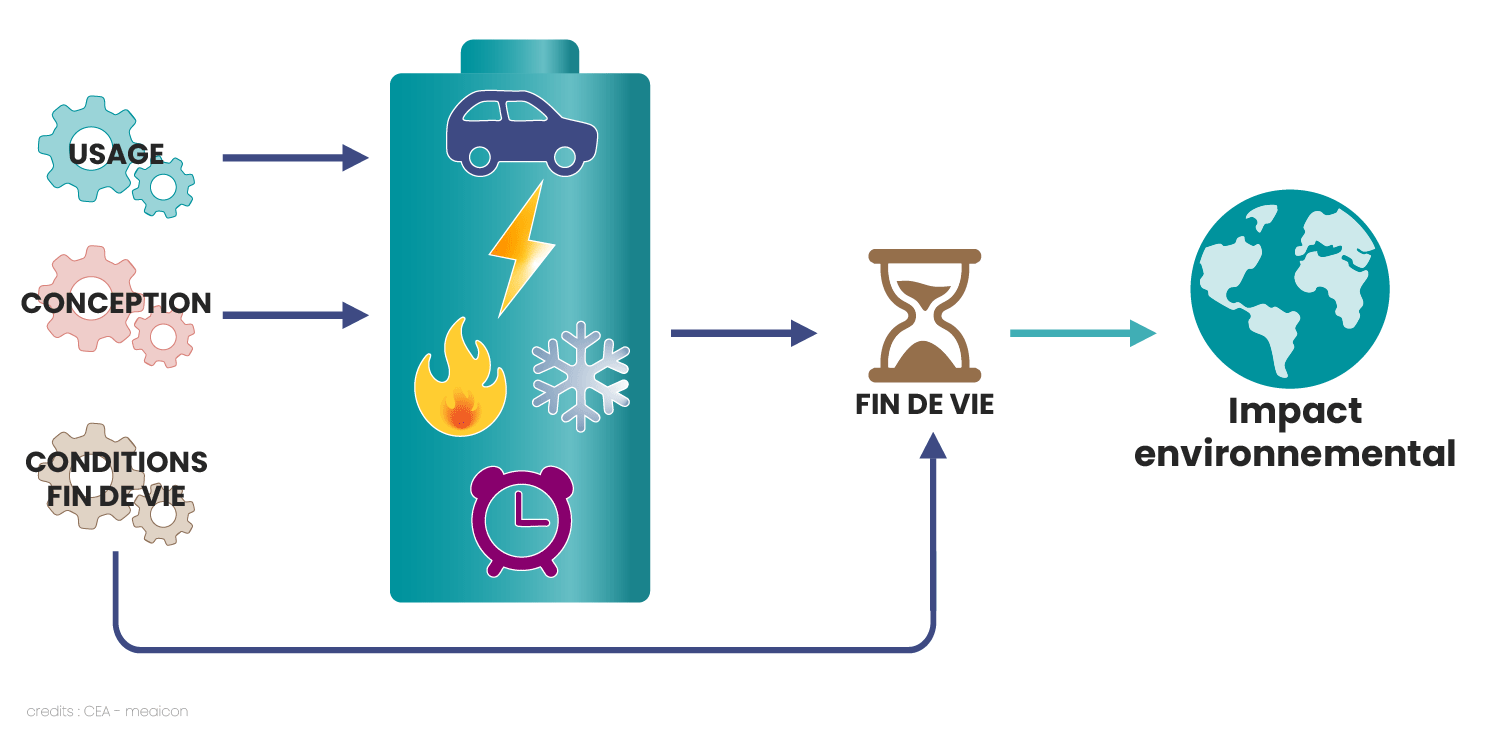CEA is deeply committed to designing the batteries of tomorrow, with a view to facilitating sustainable and effective e-mobility. Batteries are complex systems, bringing together electronic, mechanical, and thermal components. Although traditional eco-design methods, such as Life-Cycle Analyses (LCA), take into account all of these components, they consider both battery performance and lifetime as fixed variables from the outset. This means that they fail to account for the impact that a change in design could have on these two parameters.
A tool combining LCA with parametric models
To overcome this limitation, innovative software has been developed as part of a thesis conducted at CEA in collaboration with Laboratoire G-SCOP. This piece of software combines LCA with performance and aging models developed by researchers, enabling an accurate assessment of battery aging. Unlike traditional methods, which arbitrarily define a set number of kilometers traveled, this model accounts for the design and use of a battery. Therefore, the tool will not only consider emissions resulting from battery manufacture, but also those related to usage over their actual lifetime.

Figure: General architecture for calculating battery impacts with Lifetrac. User-defined parameters serve as inputs to the performance model, which calculates cell current, voltage, SoC, SoH, and temperature at each time step. Predefined end-of-life criteria are checked to identify when the battery reaches its end of life. The simulation is stopped, and all model outputs are exported to update the battery system lifecycle inventory and then calculate the associated environmental impacts.
The optimal scenario for the environment
This tool has already been applied in many case studies, including one that looked into oversized batteries. Thinking intuitively, we would probably expect a heavier battery to have a greater impact. However, this method uncovered a surprise optimal scenario with regard to the environment: slightly oversized batteries could actually be more sustainable, since they have a much longer lifetime than very small batteries, while also being more efficient than very large batteries, which over-consume energy.
Conclusion
This new approach has enhanced CEA’s eco-design toolbox. By taking into account the environmental impact from as early as upstream research, as well as performance and cost criteria, this tool has proved invaluable in directing our progress toward more sustainable batteries.